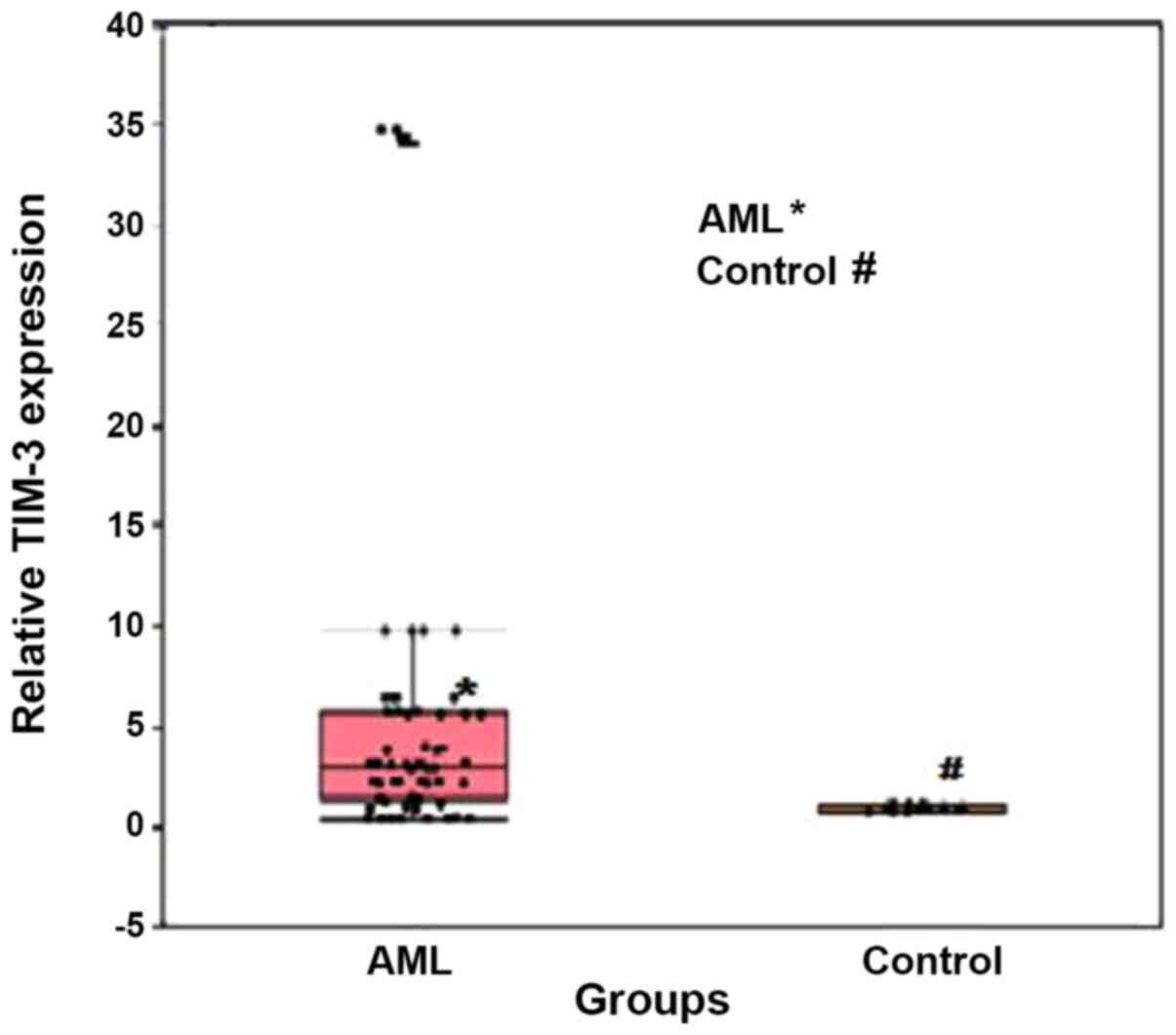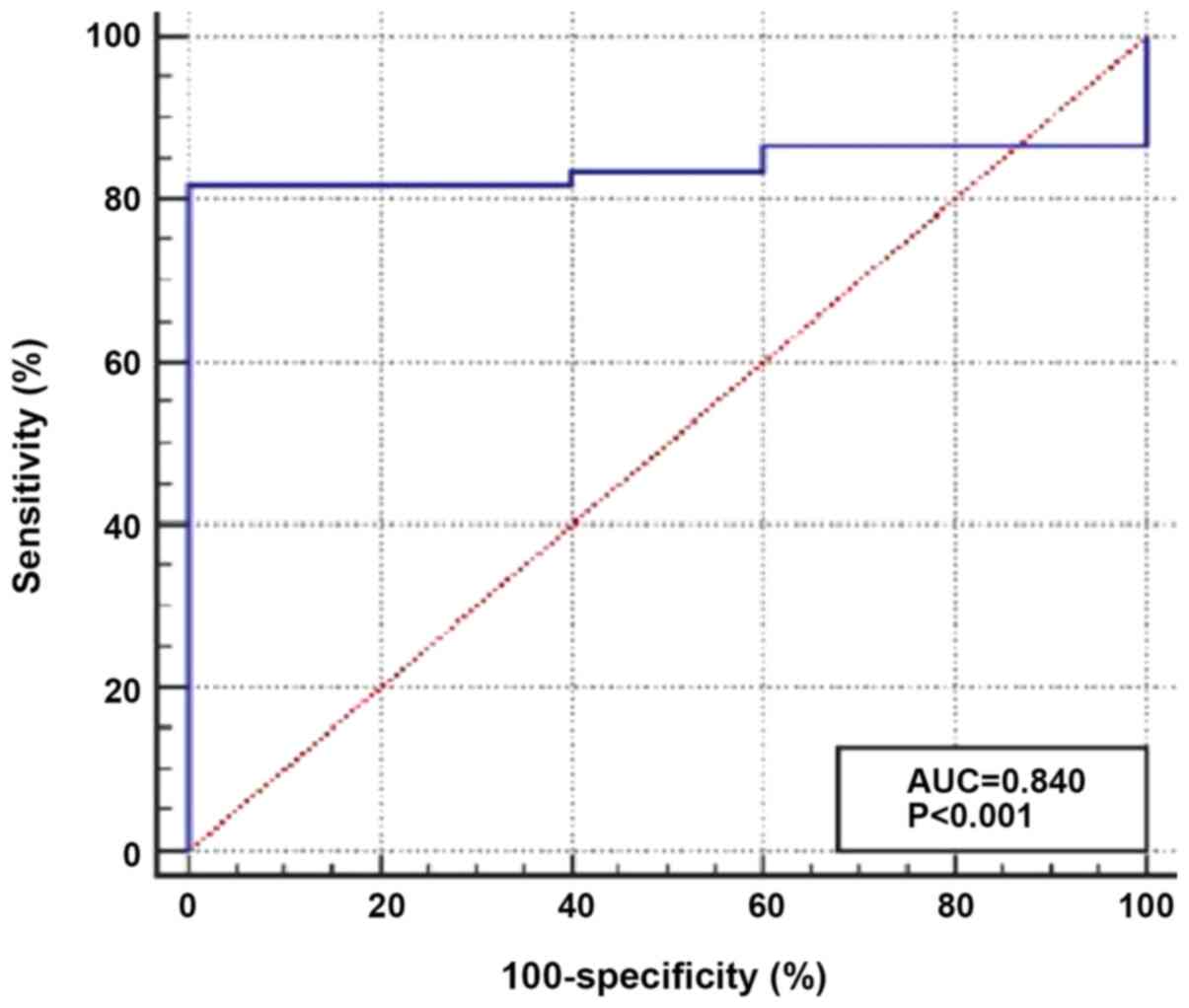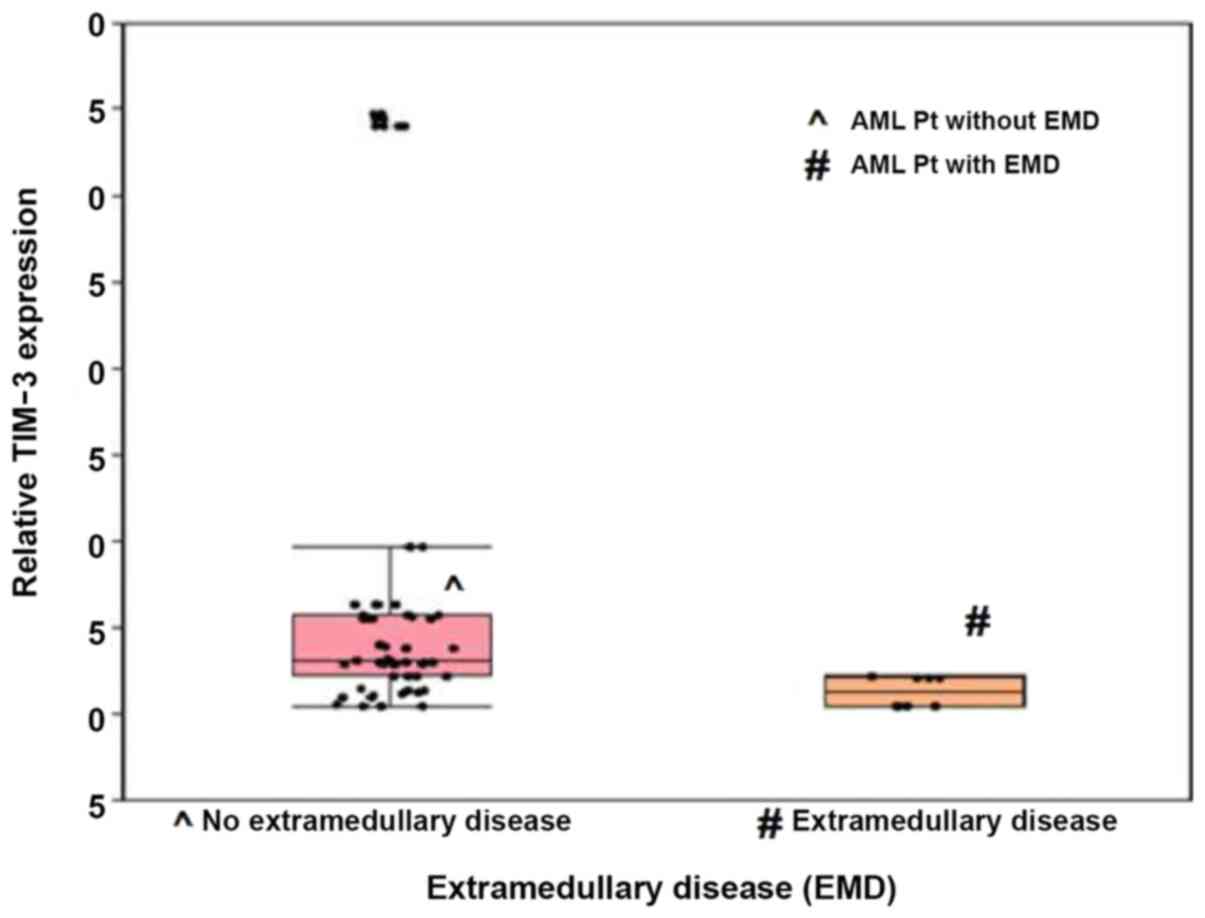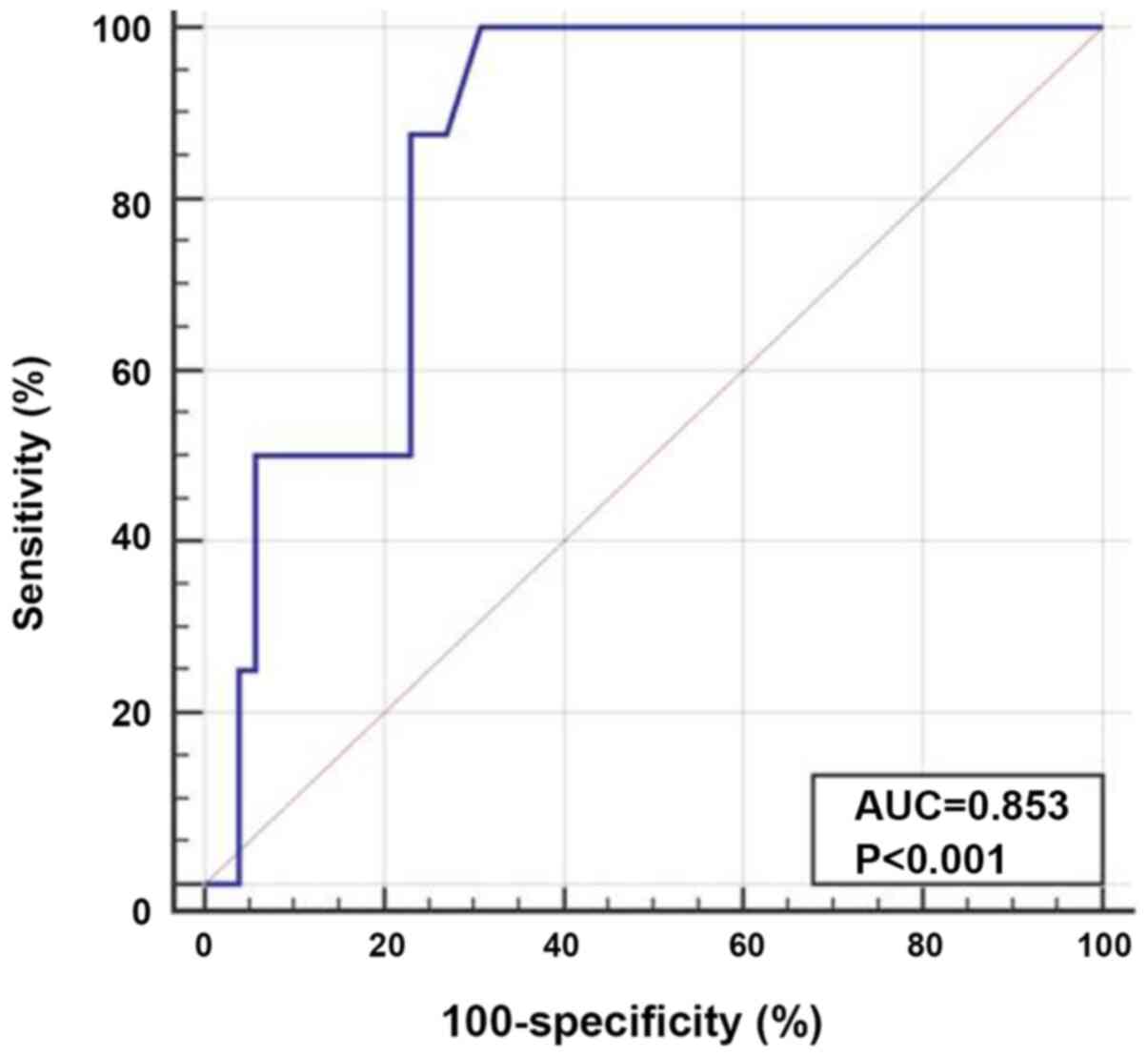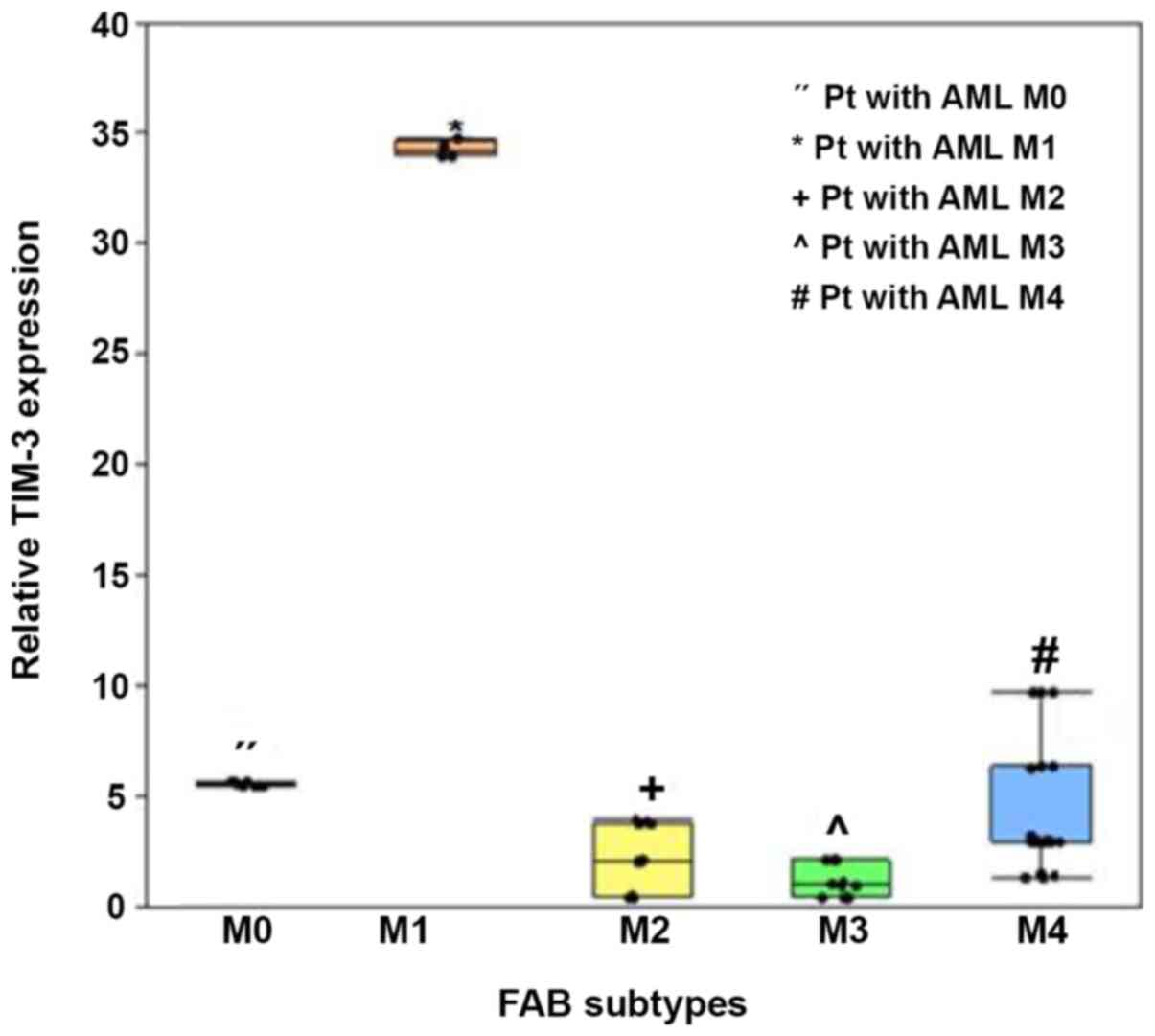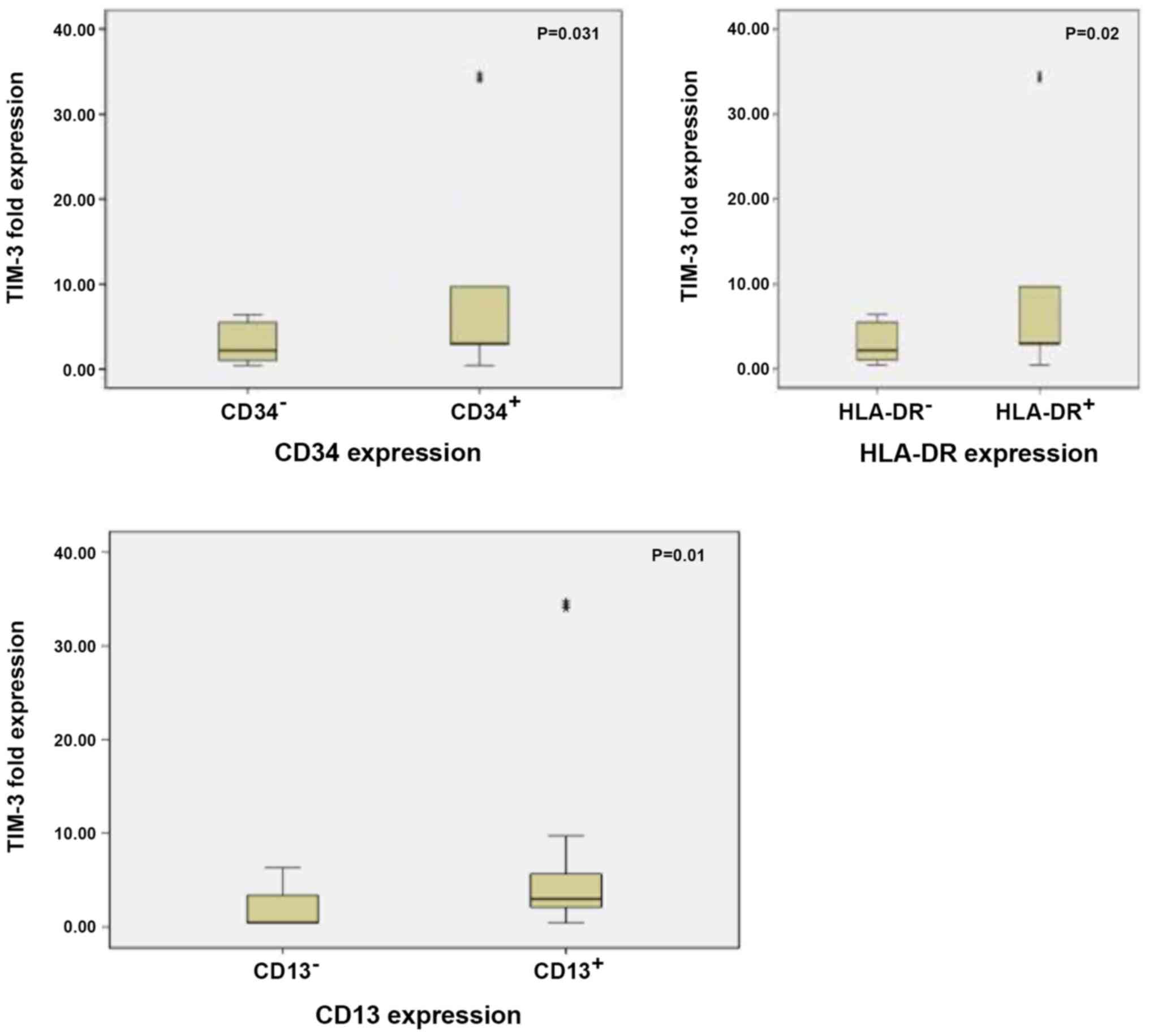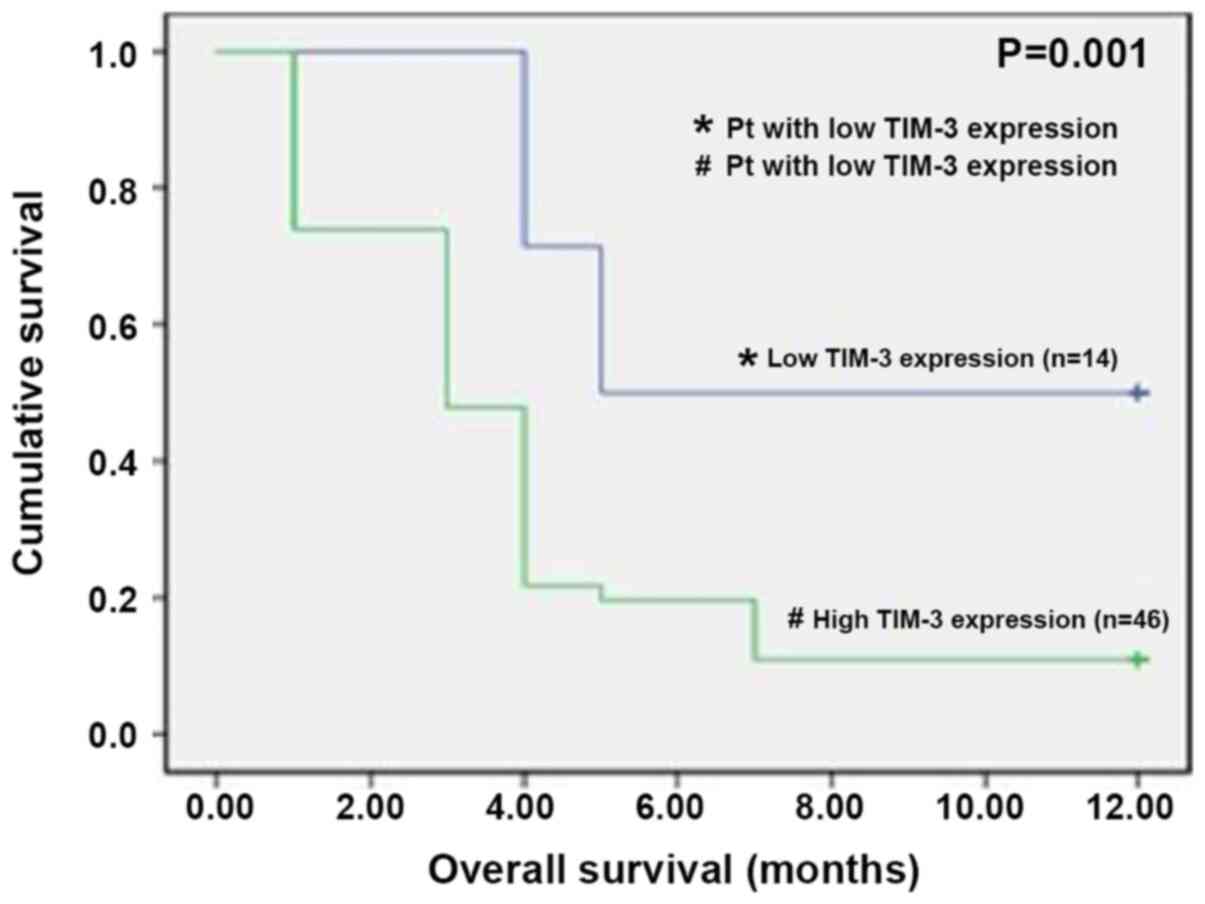|
1
|
Döhner H, Estey E, Grimwade D, Amadori S,
Appelbaum FR, Büchner T, Dombret H, Ebert BL, Fenaux P, Larson RA,
et al: Diagnosis and management of AML in adults: 2017 ELN
recommendations from an international expert panel. Blood.
129:424–47. 2017. View Article : Google Scholar : PubMed/NCBI
|
|
2
|
Shallis RM, Wang R, Davidoff A, Ma X and
Zeidan AM: Epidemiology of acute myeloid leukemia: Recent progress
and enduring challenges. Blood Rev. 36:70–87. 2019. View Article : Google Scholar : PubMed/NCBI
|
|
3
|
Mohammadiasl J, Khosravi A, Shahjahani M,
Azizidoost S and Saki N: Molecular and cellular aspects of
extramedullary manifestations of acute myeloid leukemia. J Cancer
Metastasis Treat. 2:44–50. 2016.
|
|
4
|
Wang ES: Treating acute myeloid leukemia
in older adults. Hematol Am Soc Hematol Educ Program. 2014:14–20.
2014. View Article : Google Scholar
|
|
5
|
Stahl M, Lu BY, Kim TK and Zeidan AM:
Novel therapies for acute myeloid leukemia: Are we finally breaking
the deadlock? Target Oncol. 12:413–447. 2017. View Article : Google Scholar : PubMed/NCBI
|
|
6
|
Lamble AJ and Lind EF: Targeting the
immune microenvironment in acute myeloid leukemia: A focus on t
cell immunity. Front Oncol. 8:2132018. View Article : Google Scholar : PubMed/NCBI
|
|
7
|
Pardoll DM: The blockade of immune
checkpoints in cancer immunotherapy. Nat Rev Cancer. 12:252–264.
2012. View
Article : Google Scholar : PubMed/NCBI
|
|
8
|
Yamamoto T, Price DA, Casazza JP, Ferrari
G, Nason M, Chattopadhyay PK, Roederer M, Gostick E, Katsikis PD,
Douek DC, et al: Surface expression patterns of negative regulatory
molecules identify determinants of virus-specific CD8+
T-cell exhaustion in HIV infection. Blood. 117:4805–4815. 2011.
View Article : Google Scholar : PubMed/NCBI
|
|
9
|
Anderson AC, Joller N and Kuchroo VK:
Lag-3, TIM-3, and TIGIT: Co-inhibitory receptors with specialized
functions in immune regulation. Immunity. 44:989–1004. 2016.
View Article : Google Scholar : PubMed/NCBI
|
|
10
|
Zhu C, Anderson AC, Schubart A, Xiong H,
Imitola J, Khoury SJ, Zheng XX, Strom TB and Kuchroo VK: The TIM-3
ligand galectin-9 negatively regulates T helper type 1 immunity.
Nat Immunol. 6:1245–1252. 2005. View
Article : Google Scholar : PubMed/NCBI
|
|
11
|
Anderson AC: Tim-3, a negative regulator
of anti-tumor immunity. Curr Opin Immunol. 24:213–216. 2012.
View Article : Google Scholar : PubMed/NCBI
|
|
12
|
Kikushige Y, Shima T, Takayanagi S, Urata
S, Miyamoto T, Iwasaki H, Takenaka K, Teshima T, Tanaka T, Inagaki
Y and Akashi K: TIM-3 is a promising target to selectively kill
acute myeloid leukemia stem cells. Cell Stem Cell. 7:708–7017.
2010. View Article : Google Scholar : PubMed/NCBI
|
|
13
|
Li C, Chen X, Yu X, Zhu Y, Ma C, Xia R, Ma
J, Gu C, Ye L and Wu D: TIM-3 is highly expressed in T cells in
acute myeloid leukemia and associated with clinicopathological
prognostic stratification. Int J Clin Exp Pathol. 7:6880–6888.
2014.PubMed/NCBI
|
|
14
|
Arber DA, Orazi A, Hasserjian R, Thiele J,
Borowitz MJ, Le Beau MM, Bloomfield CD, Cazzola M and Vardiman JW:
The 2016 revision to the World Health Organization classification
of myeloid neoplasms and acute leukemia. Blood. 127:2391–2405.
2016. View Article : Google Scholar : PubMed/NCBI
|
|
15
|
Nunez R: Flow cytometry: Principles and
instrumentation. Curr Issues Mol Biol. 3:39–45. 2001.PubMed/NCBI
|
|
16
|
Fröhling S, Skelin S, Liebisch C, Scholl
C, Schlenk RF, Döhner H and Döhner K; Acute Myeloid Leukemia Study
Group, Ulm, : Comparison of cytogenetic and molecular cytogenetic
detection of chromosome abnormalities in 240 consecutive adult
patients with acute myeloid leukemia. J Clin Oncol. 20:2480–2485.
2002. View Article : Google Scholar : PubMed/NCBI
|
|
17
|
O'Donnell MR, Abboud CN, Altman J,
Appelbaum FR, Arber DA, Attar E, Borate U, Coutre SE, Damon LE,
Goorha S, et al: NCCN clinical practice guidelines acute myeloid
leukemia. J Natl Compr Canc Netw. 10:984–1021. 2012. View Article : Google Scholar : PubMed/NCBI
|
|
18
|
National Comprehensive Cancer Network:
Acute myeloid leukemia (Version 2. 2018). http://www.nccn.org/professionals/physician_gls/pdf/aml
|
|
19
|
Livak KJ and Schmittgen TD: Analysis of
relative gene expression data using real-time quantitative PCR and
the 2(-Delta Delta C(T)) method. Methods. 25:402–408. 2001.
View Article : Google Scholar : PubMed/NCBI
|
|
20
|
Wians FH: Clinical laboratory tests:
Which, why, and what do the results mean? Laboratory Med.
40:105–113. 2009. View Article : Google Scholar
|
|
21
|
Song X, Peng Y, Wang X, Chen Y, Jin L,
Yang T, Qian M, Ni W, Tong X and Lan J: Incidence, survival, and
risk factors for adults with acute myeloid leukemia not otherwise
specified and acute myeloid leukemia with recurrent genetic
abnormalities: Analysis of the surveillance, epidemiology, and end
results (SEER) database, 2001–2013. Acta Haematol. 139:115–127.
2018. View Article : Google Scholar : PubMed/NCBI
|
|
22
|
Prokocimer M, Molchadsky A and Rotter V:
Dysfunctional diversity of p53 proteins in adult acute myeloid
leukemia: Projections on diagnostic work up and therapy. Blood.
130:699–712. 2017. View Article : Google Scholar : PubMed/NCBI
|
|
23
|
Radwan SM, Elleboudy NS, Nabih NA and
Kamal AM: The immune checkpoints cytotoxic T Lymphocyte Antigen-4
and Lymphocyte activation gene-3 expression is up-regulated in
acute myeloid leukemia. HLA. 96:3–12. 2020. View Article : Google Scholar : PubMed/NCBI
|
|
24
|
Sakuishi K, Apetoh L, Sullivan JM, Blazar
BR, Kuchroo VK and Anderson AC: Targeting TIM-3 and PD-1 pathways
to reverse T cell exhaustion and restore anti-tumor immunity. J Exp
Med. 207:2187–2194. 2010. View Article : Google Scholar : PubMed/NCBI
|
|
25
|
Darwish NHE, Sudha T, Godugu K, Elbaz O,
Abdelghaffar HA, Hassan EE and Mousa SA: Acute myeloid leukemia
stem cell markers in prognosis and targeted therapy: Potential
impact of BMI-1, TIM-3 and CLL-1. Oncotarget. 7:57811–57820. 2016.
View Article : Google Scholar : PubMed/NCBI
|
|
26
|
Xu L, Xu J, Ma S, Li X, Zhu M, Chen S, Han
Y, Tang X, Fu Z, Qiu H, et al: High TIM-3 expression chemotherapy
sensitivity on AML blasts could enhance chemotherapy sensitivity.
Oncotarget. 8:102088–102096. 2017. View Article : Google Scholar : PubMed/NCBI
|
|
27
|
Jan M, Chao MP, Cha AC, Alizadeh AA,
Gentles AJ, Weissman IL and Majeti R: Prospective separation of
normal and leukemic stem cells based on differential expression of
TIM3, a human acute myeloid leukemia stem cell marker. Proc Natl
Acad Sci USA. 108:5009–5014. 2011. View Article : Google Scholar : PubMed/NCBI
|
|
28
|
Tan J, Huang S, Huang J, Yu Z, Chen Y, Lu
Y, Li Y and Chen S: Increasing Tim-3+CD244+,
Tim-3+CD57+, and
Tim-3+PD-1+ T cells in patients with acute
myeloid leukemia. Asia Pac J Clin Oncol. 16:137–141. 2020.
View Article : Google Scholar : PubMed/NCBI
|
|
29
|
Silva IG, Gibbs BF, Bardelli M, Varani L
and Sumbayev VV: Differential expression and biochemical activity
of the immune receptor TIM-3 in healthy and malignant human myeloid
cells. Oncotarget. 6:33823–33833. 2015. View Article : Google Scholar : PubMed/NCBI
|
|
30
|
Radwan SM, Hamdy NM, Hegab HM and
El-Mesallamy HO: Beclin-1 and hypoxia-inducible factor-1α genes
expression: Potential biomarkers in acute leukemia patients. Cancer
Biomark. 16:619–26. 2016. View Article : Google Scholar : PubMed/NCBI
|
|
31
|
Sinha K: Prognostic significance of
flowcytometric immunophenotype in acute leukemias: Insights gained
at a tertiary care hospital. J Dental Med Sci. 18:55–58. 2019.
|
|
32
|
Jiang L, Yu G, Meng W, Wang Z, Meng F and
Ma W: Overexpression of amyloid precursor protein in acute myeloid
leukemia enhances extramedullary infiltration by MMP-2. Tumor Biol.
34:629–636. 2013. View Article : Google Scholar
|
|
33
|
Kikushige Y and Miyamoto T: TIM-3 as a
novel therapeutic target for eradicating acute myelogenous leukemia
stem cells. Int J Hematol. 98:627–633. 2013. View Article : Google Scholar : PubMed/NCBI
|















